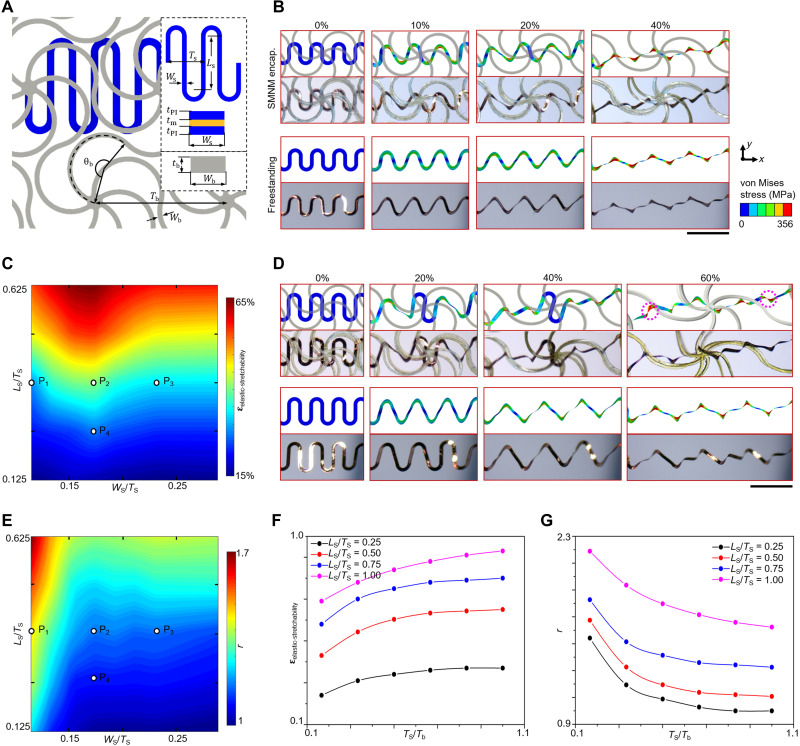Fig. 2. Experimental and computational studies on the buckling mechanics of stretchable serpentine interconnects encapsulated by two network layers.
(A) Illustration of key geometric parameters for a serpentine interconnect encapsulated by two network layers. (B) Optical images and corresponding FEA results on deformation sequences of a serpentine interconnect [Ws/Ts = 0.171 and Ls/Ts = 0.375; marked as P2 in (C)] encapsulated by network materials, in comparison to that in the freestanding condition. (C) Contour plot of the interconnect elastic stretchability (εelastic-stretchability) in terms of the design parameters Ws/Ts and Ls/Ts. The design parameters (Ws/Ts, Ls/Ts) of the five design points (P1 to P5) are (0.114, 0.375), (0.171, 0.375), (0.228, 0.375), (0.171, 0.250), and (0.171, 0.625), respectively. (D) Optical images and corresponding FEA results on deformation sequences of a serpentine interconnect [Ws/Ts = 0.171 and Ls/Ts = 0.625; marked as P5 in (C)] encapsulated by network materials. (E) Contour plot of the constraint factor (r) in terms of design parameters Ws/Ts and Ls/Ts. (F) Interconnect elastic stretchability versus the design parameter Ts/Tb for a range of different height/spacing ratios (Ls/Ts). (G) Constraint factor versus the design parameter Ts/Tb for a range of different height/spacing ratios (Ls/Ts). Photo credit: H.S., Tsinghua University.

